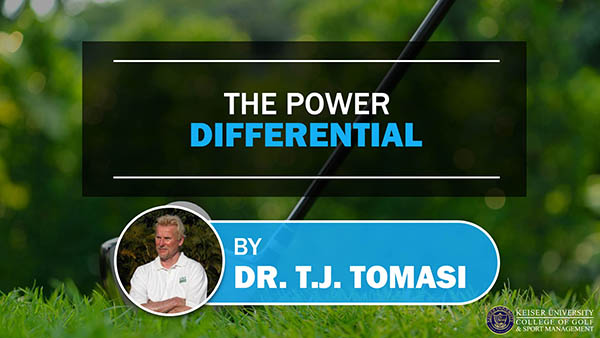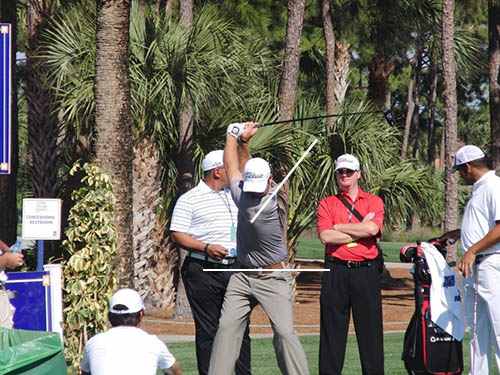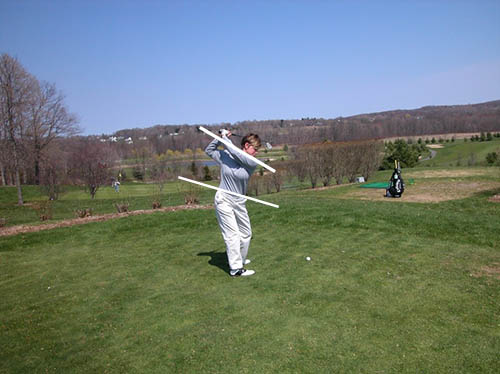The Power Differential

by Dr. T. J. Tomasi, Keiser University College of Golf Senior Faculty and Director of Research
When talking about power, I’m often asked, “How does someone like long-drive phenom Jamie Sadlowski, who in his prime produced 400-yard drives even though he weighed only 170 pounds?” One reason is the amount of coil he produced.
Sadlowski rotated his shoulders 166 degrees, but his hips only 49 degrees, creating a huge, power-laden differential of 117 degrees. The average golfer has a 38-degree differential, but by knowing what you’re doing, you can increase this key metric of power. Here are some points to keep in mind.
The Transition Zone
The transition occurs at the top of your swing when the club changes directions. At this point, your goal is to increase body coil by restricting hip turn and increasing spine rotation.
The Stretch Factor
Most low-handicap players start their hips forward as the clubhead reaches the end of the backswing arc, but to take full advantage of the stretch factor, you must start your hips moving before you complete your backswing, i.e., while the club is still moving up on the backswing arc.
Avoid the Big Mistake
You hear it said so often that you’d almost think it’s true: “Turn your shoulders around the spine.” Well, the shoulders don’t turn around the spine; they are attached to the spine, so they turn with it, not around it — a very different concept that is not simply a matter of semantics. Spine rotation occurs primarily in the middle of your back, in an area called the thoracic spine. If you are to improve your coil, it will come by maximizing your flexibility in this region.
For most golfers, intervention is key. Yoga and Pilates are among the best training programs to foster golf flexibility. This type of intervention is a must if you’re interested in maxing your distance, and it’s never too late to start.
Takeaway: Of course, many things are involved in generating power in your golf swing, but a key aspect is a differential between the amount of thoracic spine turn and the amount of hip turn.

This is a full “two-shoulder turn,” initiated and controlled by the thoracic spine. Note the differential between his shoulder turn and his hip turn.

This player is turning her hips about the same amount as her shoulders, thereby lowering the power differential dramatically.
If you’d like to study with Dr. Tomasi and other PGA Master Professionals, contact The College of Golf today.














